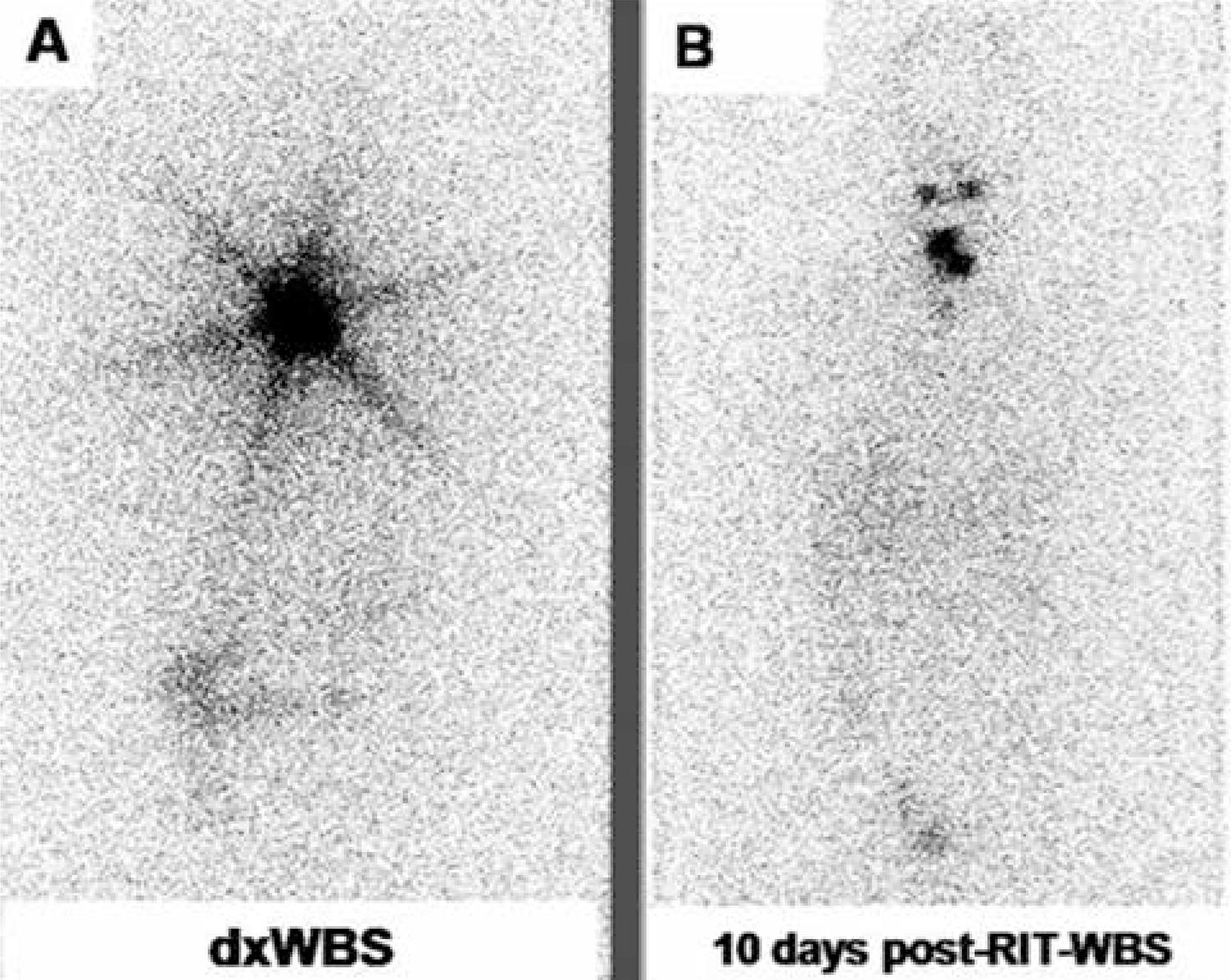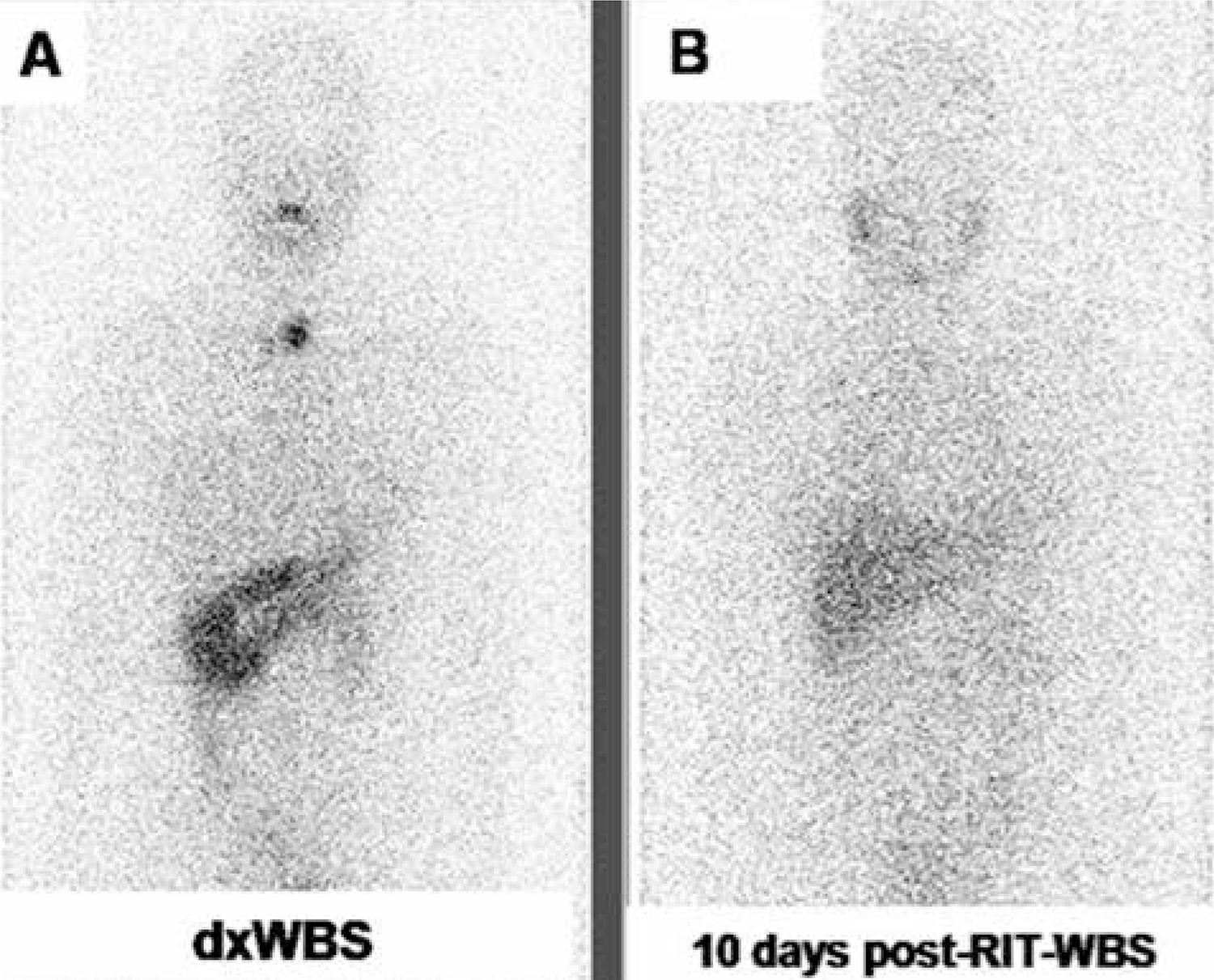Objective
: Current guidelines have advised against the performance of 131I-iodide diagnostic whole body scintigraphy (dxWBS) to minimize the occurrence of stunning, and to guarantee the efficiency of radioiodine therapy (RIT). The aim of the study was to evaluate the impact of stunning on the efficacy of RIT and disease outcome.
Subjects and methods
: This retrospective analysis included 208 patients with differentiated thyroid cancer managed according to a same protocol and followed up for 12-159 months (mean 30 ± 69 months). Patients received RIT in doses ranging from 3,700 to 11,100 MBq (100 mCi to 300 mCi). Post-RIT-whole body scintigraphy images were performed 10 days after RIT in all patients. In addition, images were also performed 24-48 hours after therapy in 22 patients. Outcome was classified as no evidence of disease (NED), stable disease (SD) and progressive disease (PD).
Results
: Thyroid stunning occurred in 40 patients (19.2%), including 26 patients with NED and 14 patients with SD. A multivariate analysis showed no association between disease outcome and the occurrence of stunning (p = 0.3476).
Conclusion
: The efficacy of RIT and disease outcome do not seem to be related to thyroid stunning. Arq Bras Endocrinol Metab. 2014;58(3):292-300
Thyroid cancer; radioiodine therapy; radionuclide scintigraphy; stunning; 131I-iodide



